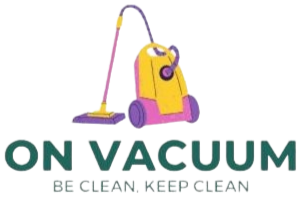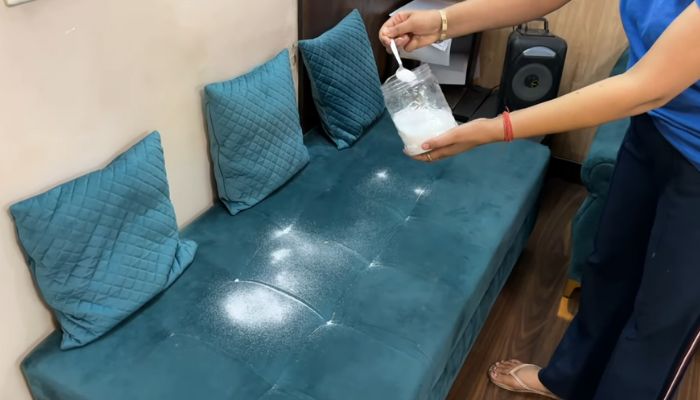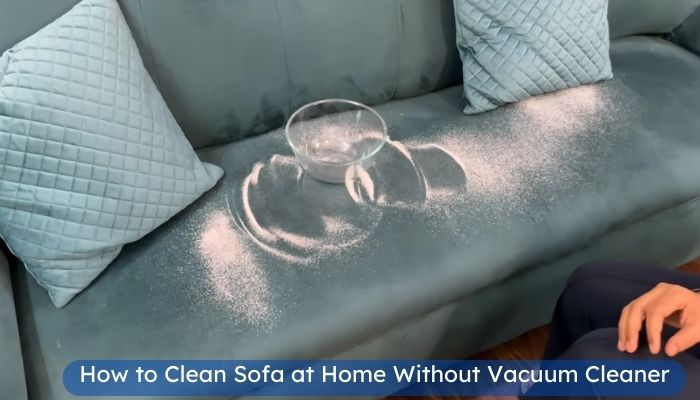How to Clean Sofa at Home Without Vacuum Cleaner? Have you ever looked at your sofa and wondered how much dirt and germs it harbors? According to a study, the average sofa contains about 12 times more bacteria than a toilet seat. That’s not very comforting, especially if you spend a lot of time on your sofa watching TV, reading, or napping.
Cleaning your sofa regularly can help you get rid of the dirt, dust, stains, odors, and allergens that accumulate over time. It can also make your sofa look fresher and inviting and extend its lifespan. However, cleaning a sofa can be a challenging task, especially if you don’t have a vacuum cleaner. A vacuum cleaner is a handy tool that can suck up the loose debris and dust from the sofa, making it easier to clean the fabric. But what if you don’t have one, or it’s broken, or you don’t want to use it for some reason?
Don’t worry; there are other ways to clean a sofa without a vacuum cleaner. In this article, we will show you three methods of cleaning a sofa without a vacuum cleaner, using some everyday household items and products. These methods are easy, effective, and affordable, and they can help you keep your sofa clean and cozy.
Method 1: Use a lint roller or a tape
One of the simplest ways to clean a sofa without a vacuum cleaner is to use a lint roller or tape. A lint roller is a device that has a sticky surface that can pick up lint, hair, and other small particles from the sofa. A tape, such as duct tape or masking tape, can also work similarly by wrapping it around your hand and pressing it against the couch.
To use this method, you will need:
- A lint roller or a tape
- A trash can or a bag
Here are the steps to follow:
- Start from one end of the sofa and work your way to the other, rolling or tapping the lint roller or the tape over the sofa surface. Make sure to cover all the areas, including the cushions, the back, the arms, and the sides.
- When the lint roller or the tape becomes full of dirt and debris, peel it off and throw it away. Use a new one and continue the process until you have cleaned the entire sofa.
- Check the sofa for any remaining dust or hair, and repeat the process if needed.
The pros and cons of this method are:
- Pros: It is quick, easy, and cheap. It can remove most of the dust, hair, and crumbs from the sofa.
- Cons: It may not be very effective for removing stains, odors, or deep-seated dirt. It may also leave some sticky residue on the sofa if the tape needs to be of better quality.
Method 2: Use a damp cloth and a mild detergent
Another way to clean a sofa without a vacuum cleaner is to use a damp cloth and a mild detergent. A wet cloth can help you wipe down the couch and remove any stains or spots. A mild detergent can help you dissolve the dirt and grease and make the sofa smell fresh and clean.
To use this method, you will need:
- A cloth or a sponge
- A mild detergent, such as dish soap or laundry detergent
- A bucket or a bowl of warm water
- A dry towel
Here are the steps to follow:
- Mix a few drops of the detergent with the warm water in the bucket or the bowl. Stir well to create a sudsy solution.
- Dip the cloth or the sponge in the solution and wring it out to remove the excess water. You don’t want to soak the sofa, as it can cause mold or mildew growth.
- Gently rub the cloth or the sponge over the sofa, focusing on the stained or dirty areas. Use circular motions and avoid scrubbing too hard, as it can damage the fabric.
- Rinse the cloth or the sponge frequently in the bucket or the bowl, and change the water if it becomes dirty.
- Repeat the process until you have cleaned the entire sofa.
- Use a dry towel to blot the sofa and remove any excess moisture. Let the sofa air dry completely before using it.
The pros and cons of this method are:
- Pros: It is effective for removing stains, odors, and light dirt from the sofa. It can also make the sofa look brighter and smell fresher.
- Cons: It can take some time and effort, depending on the size and condition of the sofa. It can also leave some water marks or soap residue on the couch if not rinsed properly.
Method 3: Use a steam cleaner or a homemade solution
The third way to clean a sofa without a vacuum cleaner is to use a steam cleaner or a homemade solution. A steam cleaner is a device that uses hot water and steam to clean and sanitize the sofa. A homemade solution is a mixture of natural ingredients, such as vinegar and baking soda that can also clean and deodorize the couch.
To use this method, you will need:
- A steam cleaner or a spray bottle
- A homemade solution, such as vinegar and baking soda or lemon juice and salt
- A cloth or a brush
Here are the steps to follow:
- If you are using a steam cleaner, fill it with water and turn it on. Wait for it to heat up and produce steam. If you are using a homemade solution, mix the ingredients in the spray bottle and shake well. For example, you can mix one part vinegar and one part water or one part lemon juice and two parts salt.
- Spray the steam or the solution over the sofa, covering all the areas. Be careful not to saturate the couch, as it can cause mold or mildew growth.
- Use the cloth or the brush to agitate the sofa, loosening the dirt and stains gently. You can also use a toothbrush for hard-to-reach areas, such as the seams or the corners.
- Wipe the sofa with a clean cloth or a paper towel, removing the dirt and moisture. Let the sofa air dry completely before using it.
The pros and cons of this method are:
- Pros: It is the most thorough and effective way to clean a sofa without a vacuum cleaner. It can remove deep-seated dirt, stains, odors, and germs from the couch. It can also restore the color and texture of the fabric.
- Cons: It can be expensive, as you may need to buy or rent a steam cleaner. It can also be risky, as some fabrics may not be suitable for steam cleaning or acidic solutions. You should always check the manufacturer’s instructions and care labels for your sofa before using this method.
Final Thought
Cleaning a sofa without a vacuum cleaner can be a challenging task, but it is not impossible. You can use one of the three methods we have discussed in this article, depending on your preference, budget, and availability of materials. These methods are:
- Method 1: Use a lint roller or tape to remove dust, hair, and crumbs from the sofa.
- Method 2: Use a damp cloth and a mild detergent to wipe down the couch and remove stains.
- Method 3: Use a steam cleaner or a homemade solution to deep clean and sanitize the sofa.
By using these methods, you can keep your sofa clean and cozy and enjoy its comfort and beauty for a long time. However, you should also remember to maintain your sofa regularly by doing the following:
- Fluff and rotate the cushions to prevent sagging and unevenness.
- Wear and tear. You can also use a vacuum cleaner occasionally to remove the dust that may accumulate under the cushions or in the crevices.
- Protect the sofa from direct sunlight, heat, and moisture, as they can cause fading, cracking, or warping of the fabric and the frame. You can also use a sofa cover or a throw to shield the sofa from spills, stains, or pets.
- Treat any spills or stains as soon as possible by blotting them with a clean cloth or a paper towel. Do not rub or scrub the paint, as it can spread or set into the fabric. Use a mild detergent or a stain remover that is suitable for your sofa material, and follow the instructions carefully.
FAQs
Here are some frequently asked questions and answers related to the topic of how to clean a sofa at home without a vacuum cleaner:
- Q: How often should I clean my sofa?
- A: It depends on how much you use your sofa and how dirty it gets. Generally, you should clean your sofa at least once every six months or more often if you have pets, children, or allergies. You should also spot-clean any spills or stains as soon as they occur.
- Q: What kind of detergent or solution should I use to clean my sofa?
- A: You should always check the manufacturer’s instructions and care labels for your sofa before using any detergent or solution. Some fabrics may be sensitive to certain chemicals or ingredients and may require special care. As a rule of thumb, you should use a mild, non-bleaching, and pH-neutral detergent or solution and test it on a small, inconspicuous area of your sofa before applying it to the whole surface.
- Q: How can I get rid of the foul smell from my sofa?
- A: There are several ways to deodorize your sofa and make it smell fresh and clean. You can use a steam cleaner or a homemade solution, such as vinegar and baking soda or lemon juice and salt, to sanitize and neutralize the odor. You can also sprinkle some baking soda or cornstarch over the sofa, let it sit for a few hours, and then brush it off or vacuum it up. Alternatively, you can use a fabric freshener spray or a dryer sheet to mist or rub the sofa lightly.
- Q: How can I prevent my sofa from getting dirty or stained?
- A: The best way to prevent your sofa from getting dirty or stained is to avoid eating, drinking, or smoking on the couch or to use a tray, a coaster, or an ashtray if you do. You should also keep your pets off the sofa or use a pet cover or a blanket if you allow them. Moreover, you should avoid wearing shoes, jeans, or dark-colored clothes on the couch, as they can transfer dirt or dye to the fabric.
- Q: How can I restore the color and texture of my sofa?
- A: If your sofa has faded or lost its luster, you can try to restore its color and texture by using a steam cleaner or a homemade solution, such as vinegar and baking soda or lemon juice and salt, to deep clean and brighten the fabric. You can also use a fabric dye or spray paint that is suitable for your sofa material, and follow the instructions carefully. However, you should be aware that these methods may only work for some fabrics and may cause damage or discoloration if not done correctly. You should always test them on a small, inconspicuous area of your sofa before applying them to the whole surface.






